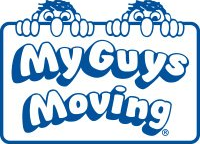
Transitioning to assisted living is a meaningful step toward aging adults living a more supportive lifestyle, but it’s a path that may require emotional adjustments and logistical planning for both seniors and their loved ones.
A well-organized approach helps reduce stress, allowing everyone involved to focus on what’s important: creating a seamless move and a positive adjustment to the new environment.
Understanding Assisted Living and Its Benefits
Assisted living provides a customized housing solution for seniors, offering support with daily tasks while fostering their independence. These communities typically include private or semi-private living spaces, access to professional caregivers, and a variety of amenities tailored to individual needs.
The advantages of assisted living go far beyond practicality, with residents receiving customized care for their unique needs, such as medication assistance and meal planning, alongside the added reassurance of built-in safety measures and round-the-clock staff support. New social opportunities, ranging from organized activities to shared meals, help encourage more meaningful connections and combat isolation.
Planning the Move to Assisted Living
The process of moving to assisted living begins with thorough research and tours of potential communities. Families should evaluate facilities based on their loved one’s preferences and care needs. Online reviews, personal recommendations, and direct consultations with staff offer valuable insights into community culture and services.
During tours, ask detailed questions about staff qualifications, daily routines, and amenities. Speaking with current residents can provide additional perspective. Once a decision is made, focus on signing agreements, preparing necessary documentation, and creating a moving timeline.
A detailed plan breaks the process into manageable steps, such as downsizing possessions, coordinating with movers, and setting a firm move-in date. Partnering with a moving company experienced in senior relocations ensures a smoother transition. Careful planning is essential when transitioning to assisted living, and the first step involves assessing individual needs and priorities.
Organizing Important Documents

Having important documents readily accessible is critical. These include medical records, identification (e.g., birth certificates and Social Security cards), financial documents (e.g., bank statements and power of attorney agreements), and legal paperwork related to the move.
To stay organized, use labeled folders for physical copies and store them in a fireproof, waterproof container. Additionally, create digital backups stored securely on a password-protected device or cloud storage. Maintaining an updated list of document locations can save time and reduce stress.
Downsizing and Packing
Downsizing is often challenging, but it’s an essential part of transitioning to assisted living. Start by categorizing belongings into items to keep, donate, or discard. This approach helps seniors retain control and provides an opportunity for meaningful conversations.
Prioritize functional and sentimental items. Furniture should fit the new living space, while cherished keepsakes like photo albums or favorite decorations can make the environment feel like home. Remember that some facilities may have limited storage, so using movers who offer storage options can be helpful.
Engage in professional moving services with experience in senior relocations. Look for companies with certifications in handling antiques and delicate items. These professionals can assist with packing, transportation, and storage needs.
Focus on keeping essentials such as medications, toiletries, and vital documents when handling last-minute preparations. Always keep them separate and on your person or with a family member to avoid any issues.
Moving Day and Settling In
Moving day can be overwhelming, but preparation ensures a smoother experience. Take the time to assess the needs of your loved one and consider having a meal before unpacking. This can help settle nerves and allow time to prepare for the next step.

Upon arrival, focus on setting up the bedroom first. Arrange familiar items, such as bedding and decorations, to create a comforting and restful space. Next, unpack and organize the bathroom and kitchen. Familiarity in these areas can help seniors adjust more quickly.
Introduce seniors to community staff and neighbors early to foster connections. Personalized support from staff helps create a welcoming atmosphere, easing the adjustment to the new environment.
MG Moving Services Eases The Transition to Assisted Living
Thoughtful planning can make transitioning to assisted living a smoother and more positive experience for everyone involved. Taking the time to prepare, organize, and address potential challenges allows seniors and their families to focus on the opportunities this new chapter can bring.
When it’s time to move, MG Moving Services offers experienced, reliable movers who understand your exact needs. From local to long-distance relocations, we make the transition to assisted living seamless. Contact us today for a free quote online, or call 1-800-783-4897 to get started.

